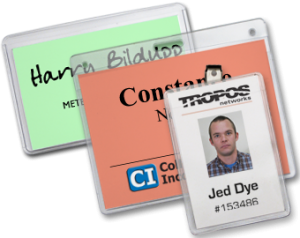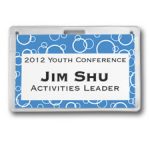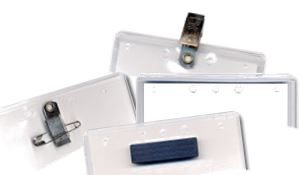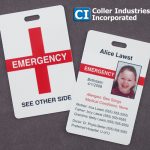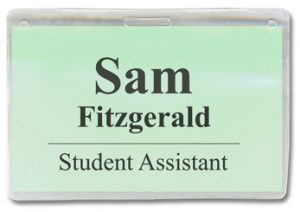First things first, what is networking?
 Networking is a supportive system of sharing and exchanging information and services among individuals, groups or institutions that have a mutual interest. Specifically, it is the cultivation of productive relationships for employment or business. It is fundamental to note that networking is also an active development of these current business relationships.
Networking is a supportive system of sharing and exchanging information and services among individuals, groups or institutions that have a mutual interest. Specifically, it is the cultivation of productive relationships for employment or business. It is fundamental to note that networking is also an active development of these current business relationships.
Think for a moment. What does good networking look like? How do people act while networking? What are their attitudes? Most people would agree that a good networker is sincere, friendly and outgoing, supportive and a good listener. It isn’t just about staying in touch. It goes beyond that. A good networker is someone you want to trust and be friends with.
A business network is a type of social network which is developed to help business people connect with other managers and entrepreneurs to further each other’s business interests by forming mutually beneficial business relationships. Several prominent business networking organizations create models of networking events that, when followed, allow the business person to build new business relationships and generate business opportunities at the same time. A professional network service is an implementation of information technology in support of business networking. Chambers of Commerce and other business-oriented groups may also organize networking activities.
So, how do you apply yourself to the networking mantra?
Here’s the scenario: “You have just arrived at your weekly, cookie-cutter networking event, and after walking up to the registration table, you proceed to search across a sea of identical plastic name badges with tiny print for the one with your name and company printed on it. You’ll affix this name tag to your shirt at the least awkward angle you can finagle, and proceed into a crowded room of people all arching their necks to scope out the people worth chatting to while trying not stare at someone’s chest for too long. And most likely many have chosen to position the name tags to be hidden in the folds of jackets or flipped around entirely making them impossible to read. Good luck with that one.”
And, whether you are wearing a name tag for an event or work every day, chances are you don’t realize the impact which you are making. In social settings, name tags can level the playing field. They are also free advertising for your company. And, they inspire people to be more approachable.
 We’re here to offer a perfect solution with a particular product line which facilitates networking and promotes making those meaningful connections. For many people, the idea of wearing a name tag evokes the stale idea of the epic “Hello, my name is…” variety you might find at an awkward mixer or high school reunion. But a name tag is a valuable tool and, when used in fresh and creative ways, it can be a useful tool in helping people interact with each other.
We’re here to offer a perfect solution with a particular product line which facilitates networking and promotes making those meaningful connections. For many people, the idea of wearing a name tag evokes the stale idea of the epic “Hello, my name is…” variety you might find at an awkward mixer or high school reunion. But a name tag is a valuable tool and, when used in fresh and creative ways, it can be a useful tool in helping people interact with each other.
But, more importantly, we are here to offer support and trusted services to help you in your networking efforts.
Many businesses use networking as a key factor in their marketing plan. It contributes to developing a strong feeling of trust between those involved and plays a big part in raising the profile and brand of a company. Suppliers and businesses tend to source business and suppliers through their existing relationships. These relationships tend to be open, random and supportive, while those relying on hierarchical, traditionally managed approaches are closed, selective and controlling.
Networking in 3 Easy Steps
Step One: Always wear your name tag. It’s the key to great networking.
A name tag reminds you to be open and honest. You can’t hide behind it. And, it gets you to network, to put yourself out there, and to make new friends. It gives you the opportunity to brand yourself, your image, and your company, with honesty and trustworthiness.
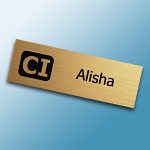 Your name tag is your best friend for several reasons. A person’s name is the first thing that most people forget upon the first meeting. Without the aid of a name tag, people are less likely to approach if they don’t know or have forgotten your name.
Your name tag is your best friend for several reasons. A person’s name is the first thing that most people forget upon the first meeting. Without the aid of a name tag, people are less likely to approach if they don’t know or have forgotten your name.
Consider all of the commitment you have access to when wearing a name tag. Networking isn’t easy, but when you are willing to put yourself out there, others around you are apt to feel more at ease and will connect better and more frequently.
Step Two: The most important thing is to get your brand noticed.
Networking only works when you use your name tags correctly with logos, titles and names. Your name tag reflects who you are and humanizes you to others. Most people tend to judge on first impressions, especially when everyone in the room is a stranger. But, if you have a way to make yourself stand out, your brand will become recognizable. And, it helps to make others more at ease around you.
If name tags are provided at an event, use them. Don’t be a name tag snob. They are there to make greeting others easier. They reduce possible awkward moments and help you remember names gracefully.
Step Three: Talk to others and, as always, wear your name tag.
It will help you be fearless. Wearing a name tag in a room full of strangers is an invite for people to talk to you, and for you to talk to people. You don’t need someone to introduce you, so be fearless and take networking into your hands.
And remember that networking only works when you use your name tags correctly with logos, titles and names.
Business Networking
“It isn’t what you know, it’s who you know,” is an ideal we all strive to make work for our companies. Business networking is the low-cost, effective way of utilizing this expression. LinkedIn is an excellent example of this. It is a great marketing method for developing business relationships to gather sales and contacts.
The definition of network in itself reminds us that it consists of connecting lines, like a railway or canal system, which run in different directions. Especially when it comes to a business network, these lines are crucial, and without them, this system no longer exists. These lines, commonly referred to as a relationship or communication, are the most important thing to maintain a network. If you don’t have a good set of contacts, a network will fail. And a good network is created, and networking succeeds, by the application of hard work.
Networking with Name Tags
 Lanyards, name tags, reusable badges and even signs are useful tools for any conference or convention.
Lanyards, name tags, reusable badges and even signs are useful tools for any conference or convention.
And the corporate event name tag is one detail that has been overlooked too much. For years people have been dealing with this awkward situation over and over again at event after event. As such, setting the stage is just as important as attending a conference or networking event. However, there are many roadblocks along the way.
Still not convinced? Here are some creative ways to use any name tag or reusable badge to help eliminate this awkwardness.
Try omitting titles and company names. Use this as an effort to associate people more with what they love to do, or excel at, than what they do for a living. Focus on the individual.
Move beyond the work domain. Try using reusable badges with a catchphrase or other conversation starter to get people to mingle.
Incorporate a theme. It doesn’t matter what the theme is, just as long as it is geared toward getting people flowing through the masses and making those necessary connections.
Daily Networking Tips:
Remember your business cards. Start carrying business cards with you everywhere. Keep some in your wallet or purse, your car and in your pocket. Take your cards to the gym, the grocery store and even to parties. You never know who you will meet or be able to talk with. And, if you don’t have your business cards with you, an opportunity may be missed.
Join new groups. From book clubs to civic organizations, networking opportunities are everywhere. So, find a new group in your area, or stretch yourself into new areas. But, no matter what, get yourself out there. Make sure to join groups that will benefit from what you have to offer. Don’t just participate in a group because you think it sounds fun. Join somewhere that gives you back what you can give in return.
Give and get back. Networking is a two-way street. When most people network, they expect something in exchange for their contact information. Sometimes it’s as simple as an information exchange. Other times, they expect time or goods in return. And most often, they expect their business to grow. Make sure to follow up with new contacts and keep sharing information with them, and you’ll see that your effort is returned.
Be friendly and approachable. Pretend you are hosting the event. Make people feel welcome. Find out what brought them there, and see if there’s any way you can help them. Introduce them to others, make business suggestions or give them a referral. Not only will you probably make a friend, but putting others at ease eliminates self-consciousness. A side benefit: What goes around comes around. If you make an effort to help others, you’ll soon find people helping you.
Event and Convention Networking:
Set a goal. Whenever attending a meeting, convention or another event, set a goal for yourself to meet new people. With this goal in mind, greet people you have never seen before. Make it a habit to be open and welcoming to everyone. Not only will people start recognizing you, but your contact list will grow, and networking will become easier for you.
Other goals that you can set for your events include: keeping up on industry trends, connecting with peers, and looking for new business opportunities. Focus on these goals throughout the entire conference, and you’ll see your network start to grow.
Put yourself out there. Don’t sit by those you know. Find someone sitting alone and introduce yourself. Make sure you extend yourself to those around you, no matter their station or occupation. The chances are that if you’re at the same event, you’re looking for some of the same information.
If you are attending a multiple day event, sit with someone new every day. Or switch it up after breaks. Get to know as many people as you can. Be that person who exchanges information, and you’ll see that your approachability will expand. And from that, your business will flourish.
Be a leader. Don’t just attend your next conference. Get out there and get involved. Become a board member or join a committee. Volunteer your time and talents at your next event. Not only will this get you noticed by the event planners and hosts, but it will also provide those around you with the opportunity to see you lead.
Being a leader is a step to doing better business. Those who can lead stand out to others, and through this your business will not only flourish, but it will grow. Your network will expand. This also gives you a reason to reach out to others. It gets you involved and provides others a way to also get involved.
Networking isn’t always easy.
You have to extend yourself and be a leader. You may make a few mistakes as you get started, but that shouldn’t deter you. Just keep trying, and you’ll find it easier and easier to reach out and grow your contacts. And don’t forget, it’s important to remind yourself that without your contacts, your business wouldn’t be what it is now. But most importantly, remember that your contact has given you a gift. It’s the gift of communication and networking. This gift is truly the gift that keeps on giving.

